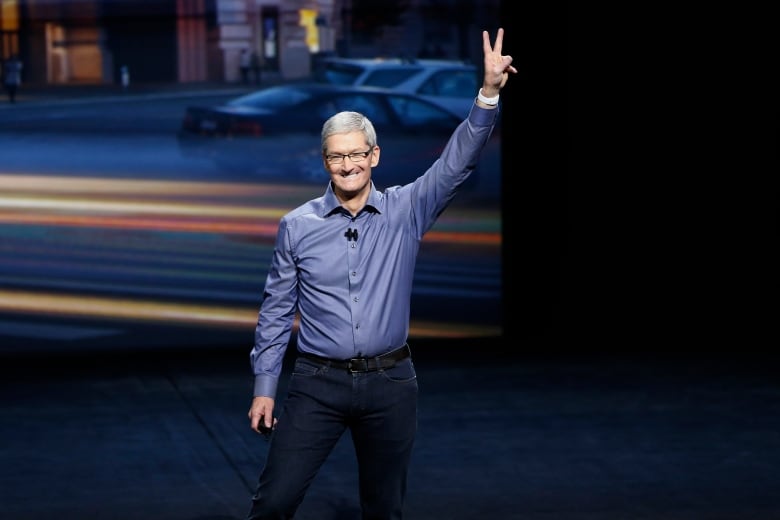Apple's latest launch dissected - 5 details you may have missed
A close look at interesting elements of Apple's new lineup
You've likely heard about the cavalcade of new products coming from Apple this fall, but here are a few important details you might have missed during the company's press event Wednesday unless you were paying very close attention.
iPhone price
Aside from incremental improvements to the new iPhones, Canadians will see another small but important change: Higher prices.
The iPhone 6S will start at $899 in Canada, while the base version of the 6S Plus will sell for $1,029.
Last year's models debuted at $749 and $859, but the prices increased in March to $839 and $969 respectively as Apple adjusted for the weaker Canadian dollar. Apple is now boosting the price on basic models a further $60.
The higher prices may be partially attributable to a further slip in the Canadian dollar since March, but not fully. The base price of the iPhone 6S in the U.S., for example, is $649 US, or about $860 Cdn at current exchange rates.

The iPhone, like many Apple products, enjoys a unique niche in the smartphone market. It's one of the few devices that has been able to either maintain a high price or even see increases, bucking the price-performance trend that applies to most technology and many other smartphones. Most phones have gotten cheaper as the cost of components goes down, despite more features being added. Other manufacturers such as Motorola and HTC, for example, are now selling relatively high-quality smartphones for $200 to $300.
The original iPhone, in contrast, was $599 US in the United States when it was first introduced in 2007, but Apple quickly dropped the price after consumers complained. Within two months of its release, it was selling for $399.
The iPhone 6S is now 60 per cent more expensive in the United States than the original was after its drop.
One factor behind the rising price in both countries is the practice of wireless carriers subsidizing devices, which masks their true cost to consumers. Subscribers typically pay a portion of the device's cost up-front, with the rest invisibly added to their monthly service charge over the course of a multi-year contract.
But carriers in both the U.S. and Canada are now moving away from this model by making the monthly device subsidies more transparent in the form of monthly installment payments. The true cost of the iPhone and other devices is thus becoming more apparent. How much longer Apple will be able to push prices higher while adding minor improvements is an open question.
Ultra inconsistency

Until now, the company maintained tight control over which apps could run on Apple TV. Many of those apps, such as Shomi and Netflix, suffered because they were subject to the uniform and outdated grid-based interface Apple imposed.
Those apps are going to be able to modernize now, which means we'll soon see the same slick Netflix interface on Apple TV as exists on most other devices.
What's most surprising about Apple's new streaming box, though, is that it won't have 4K output. That doesn't mesh with the new iPhone's ability to record video in the higher resolution.
Netflix is increasingly adding 4K content, ultra HD TV sales are picking up and iTunes could sell such shows and movies, but has chosen not to. Apple is obviously not willing to dive fully into 4K just yet.
Pointed remarks

He doubled down on the sentiment several times after that. In 2010 he said that "if you see a stylus, they blew it," and told his biographer Walter Isaacson that, "as soon as you have a stylus, you're dead."
But lo and behold, Jobs' successor as chief executive, Tim Cook, announced the Apple Pencil, a $99 US stylus add-on to the new 12.9-inch iPad pro. New CEO, new thinking.
Jobs wasn't necessarily referring to using a stylus with a tablet – where it can make sense for artists, doctors and others who need digital clipboards – but his hatred for the pointy gizmos seemed pretty, uh, pointed.
Then again, Jobs also said that no one would buy a bigger phone than the original 3.5-inch device, or an iPad with a screen smaller than 9.7 inches. The company ultimately introduced both after his death in 2011, to much success.
Naming conventions

Recent new products have gone in different direction: Apple Watch, Apple Music, Apple Pen, tvOS.
Is it a sign of Cook wanting to further distance the company from Jobs, or is it an avoidance of potential trademark issues, like the sort Apple faced with British broadcasters over "iTV?"
If Apple ever releases its rumoured iCar, we'll know.
No Watch numbers

The company likes to tout how many devices it has sold, so Cook looked more than a little conspicuous when he referenced only the Watch's 97-per-cent customer satisfaction rate and left out how many of those customers there actually are.
Analysts have estimated Apple Watch sales as modest to plunging, suggesting that perhaps not even Apple can breathe life into the moribund smartwatch market.